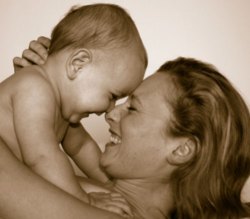Making Connections in Case Formulation and Treatment Planning: Exploring Attachment, Historical Trauma and Self-Concept.

TLC Guest Blogger: Lori Gill, M.A.
I have recently begun working with adults seeking support for addiction counseling, many of whom have experienced multiple traumas. In this role, I have been astounded by the number of individuals that say, “You’re asking me questions that no one has ever asked me before despite of years of counseling.” The questions I am asking are not extraordinary, but rather foundational assessment questions exploring in-depth their life journey – negative and positive significant events – that has brought them to where they are today. These questions about attachment, traumatic life experiences, resiliency factors and self-concept contain a wealth of information that allow for thorough case formulation and relevant treatment planning. It is often through the exploration of these topics that clients begin to make connections between past experiences and current behaviors.
Research continues to support the impact our early life experiences have on our future relationships and the fact that we are born primed for connection and attachment. Healthy connections help a child learn to self-regulate, grow and develop optimally and develop confidence in themselves and their abilities. When a child has a stressed or insecure attachment, they lack the sense of security that allows them to live in a comfortable state of arousal. If they are continually receiving reinforcement that the world is not a safe place, through a lack of responsiveness or undesirable responses, they will often remain in a state of arousal. This results in an increased vulnerability and predisposition for stress related disorders and dysfunctions such as PTSD. This also impacts on their ability to function at cognitive, social and physiological levels (Kuban, 2007; Perry & Szalavitz, 2008; Shore, 2001).
Schore (2001), indicates that a secure attachment relationship promotes optimal development of the right brain and affects regulation and adaptive mental health. Conversely, when an infant experiences extremes of stimulation and arousal of varying intensities – high with abuse, low with neglect – the infant’s emotional needs tend not to be effectively met, resulting in alterations to the biochemistry of the developing brain, particularly in the areas responsible for regulation and coping. As a result, caregiver-induced trauma is considered to be more potentially psychopathogenic than any other stressor. When the primary caregiver is the source of safety and security, regulation occurs. When they are the source of perceived danger, dysregulation occurs. Schore emphasizes the impact that a child’s environment has in the development of brain design, which is considered to be directly responsive to the infant’s environment. Their brain development is essentially shaped by the relationships they experience with their caregivers and those around them. These environments and relationships are considered to have a critical influence on the child’s psychological, social and biological development.
According to Andrews (2010), when a child experiences a traumatic upbringing where they are deprived of predictability, trust, nurturing, love and hope, childhood becomes toxic, unpredictable and abusive. Their world may be witness to violence, crime, drugs and a parental style that is full of ridicule, fear and insults. Following a trauma experience, an individual may begin to perceive the world as an unsafe place, living in a state of constant arousal. This can result in changes in the brain, which are triggered by stress functions and may alter the way we view others and ourselves. As our perceptions shape our behaviours, if the world or those around us are perceived as unsafe, this may result in an increase in anxiety or aggression, altering or impairing contact with others (Steele & Raider, 2009).
The ongoing pain resulting from relationships impacts our ability to trust. This unresolved trauma or loss from the past can directly and significantly impact emotional experience with unresolved and disorganized attachments, resulting in a primary difficulty in organizing the self, in addition to internal flooding and chaos, as well as ongoing challenges with interpersonal relationships throughout life (Alvarado, 2009; Siegel, 1999).
According to Perry (2001), the most significant relationship in a child’s life is the attachment to their primary caregiver, acting as an emotional template for future relationships. When it is conflict-ridden, with rejection typically at the core, the outcome may lead to fragile foundations for future relationships. Mate (2008), suggests that individuals with addictions are constantly seeking something outside of themselves to alleviate their insatiable need for relief and fulfillment. It is as a result of this longing and emptiness that individuals pursue substances or other self-harming or self-soothing behaviors, with the hope that it will provide some relief.
Andrews (2010), further supports this notion in stating that children who have been neglected early in life will experience future life from the understanding of the need to fight for survival at every level, physically, emotionally, spiritually and psychologically. It is out of this fight for survival the litany of behaviors begins, behaviors that will temporarily give relief from fear and the pain that they suffer. Kuban (2011), emphasizes that the eating disorder is a symptom of a greater need to be nurtured and states that “being 75 pounds or 300 pounds is a very visible, tangible way to say, I am in pain. I hurt. Somebody, please help me.” Focusing on the food allows them to distract themselves, even momentarily, making it about the food, rather than the unbearable hurt they are experiencing. Unfortunately, this relief – if it occurs at all – is only temporary because individuals are seeking to nourish a void that food cannot fill, resulting from “empty hearts, not empty tummies” (Kuban, slide 23).
Considering the impact early life experiences and connections can have on our sense of self, perception of safety and relationships, these are essential components of case formulation and treatment planning. As a result, I tend to focus on key themes, which include exploring early childhood and attachment experiences; identifying and validating emotions associated with these events; making connections and examining the impact early relationships have with current ability to form and maintain relationships; and identification of how they would like to create change also known as future forward thinking. Below are some examples of activities that can be used to guide this process:
Exploring early childhood / attachment experiences
My favorite activity is a comprehensive timeline in which clients draw, color, paint or write a narrative of the significant positive and negative experiences throughout their lives from birth to present. Once complete, we spend time discussing their life journey in detail. I begin by having them reflect back on early life experiences and describe their mom and dad, what they did, how they remember them, were they affectionate, words they would use to describe them, etc.
Identifying and validating emotions associated with life events
I often use an art activity allowing them to express the way that their childhood was by having them draw out their perceptions of the way it was, followed by the completion of the second part of the activity, drawing out the way they wish it had been. We then spend time validating and normalizing their emotions connected to these experiences (Lowenstein, 2002).
Making connections / examining the impact early relationships have with current ability to form and maintain relationships
Alvarado suggests that a key part of moving forward in the healing process is being able to identify and validate the impact former experiences have on current relationships. Helping clients to reflect on the impact that these experiences, emotions and relationships may be having on their current ability to form and maintain relationships is an empowering and often enlightening process.
Identification of how they would like their life to be (future forward thinking)
Once identification, externalization and validation have occurred, we can begin to work with clients on future forward thinking. How they would like things to be different, life goals, dreams and ambitions. I like the concept of creating a vision board and often find clients enjoy the process and find it to be inspiring.
References
Alvarado, J. (2009). When relationships hurt. Retrieved (August 10, 2011) from: http://www.Coaching-forlife.com
Andrews, E. (2010). Being trauma informed [power point slides]. St. Catharines, Ontario, Canada.
Kuban, C. (2011). Eating disorders and trauma [PowerPoint slides]. Grosse Pointe Woods, MI: National Institute for Trauma and Loss in Children.
Kuban, C. (2007). A handbook of trauma interventions. Grosse Pointe Woods, MI: National Institute for Trauma and Loss in Children.
Lowenstein, L. (2002). More creative interventions for troubled children and youth. Toronto, Ontario, Canada: Hignell Book Printing.
Mate, G. (2008). In the realm of the hungry ghost: Close encounters with addiction. Toronto, Ontario, Canada: Random House.
Perry, B. D., & Szalavitz, M. (2008). The boy who was raised as a dog: and other stories from a child psychiatrist’s notebook. New York, NY: Basic Books.
Schore, A. N., (2001). Effects of a secure attachment relationship on right brain development, affect regulation, and infant mental health. Infant Mental Health Journal, Volume22 (1-2), 7-66.
Siegel, D, (1999). The developing mind: How relationships and the brain interact to shape who we are. New York, NY: Guilford Press.
Steele, W. & Raider, M. (2001). Structured sensory intervention for traumatized children, adolescents, and parents. Retrieved (July 20, 2011) from: http://www.tlcinst.org/SteeleRaider.html
Steele, W. & Raider, M. (2009). Structured sensory interventions for traumatized children, adolescents and parents (SITCAP). Lewiston, NY: Edwin Meller Press.
